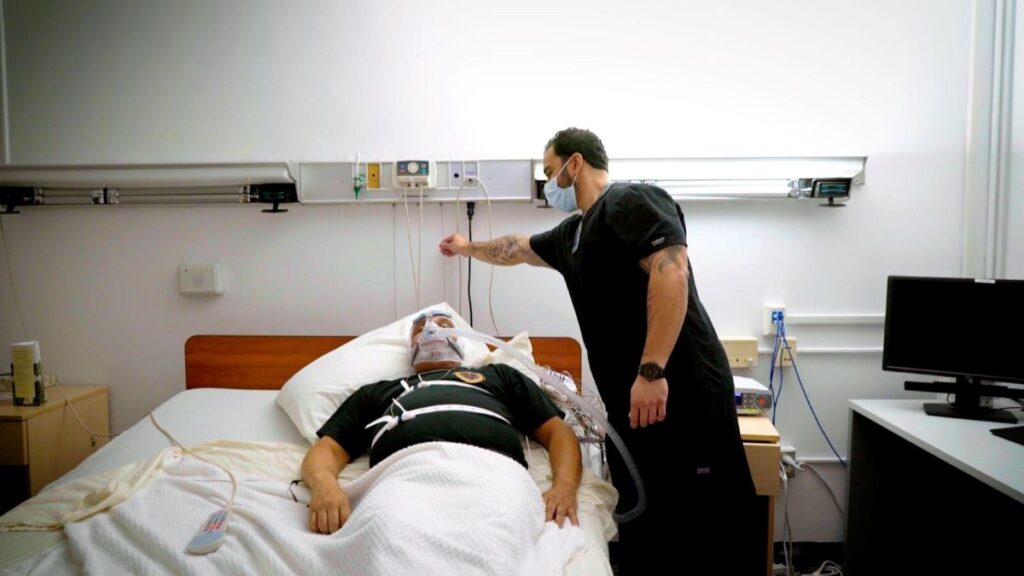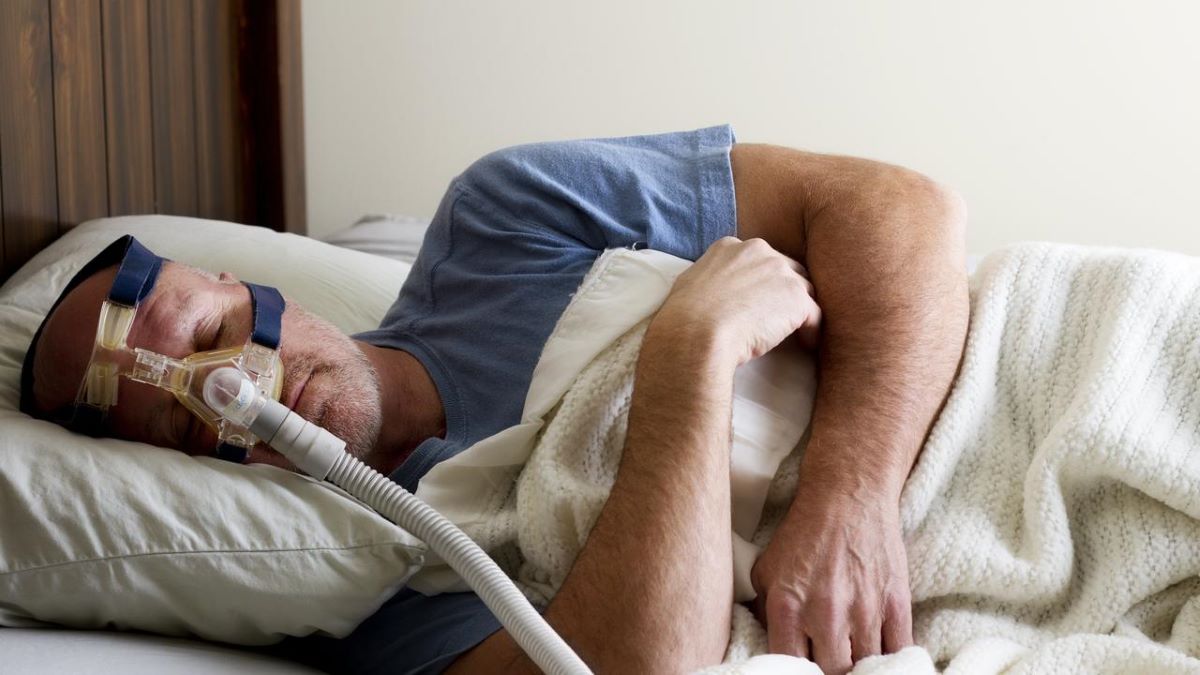What Is a Sleep Study in Perth and Why Is It Important for Understanding Apnea Results?
A sleep study in Perth is a comprehensive overnight diagnostic test that monitors your breathing, oxygen levels, heart rate, and sleep patterns to identify sleep disorders like obstructive sleep apnea. These studies provide the objective data needed to understand exactly what happens to your body during sleep.
A sleep test Perth clinics offer serves as the gold standard for diagnosing sleep apnea by measuring how often your breathing stops or becomes shallow throughout the night. These detailed recordings capture every pause in breathing, drop in oxygen saturation, and disruption to your sleep cycle, providing clear insights into the severity of your condition and guiding effective treatment. This precision allows specialists to determine not just whether you have sleep apnea, but how severe your condition is.
The importance of sleep study results extends far beyond diagnosis:
- They quantify the frequency and duration of breathing interruptions
- They reveal how deeply your oxygen levels drop during apneic events
- They identify which sleep stages are most affected by breathing disturbances
- They establish baseline measurements to track treatment effectiveness
Your apnea results directly shape your treatment plan. Mild cases might respond to lifestyle modifications alone, whilst moderate to severe sleep apnea typically requires interventions like CPAP therapy. Without accurate sleep study data, healthcare providers cannot prescribe appropriate treatments or monitor whether those treatments are working effectively to protect your long-term health.
What Are the Key Measurements Taken During a Sleep Study for Apnea?
A sleep study captures four primary indices that work together to paint a complete picture of your breathing patterns and sleep disruptions throughout the night. Each measurement provides specific insights that help specialists determine the severity of your condition and recommend the most effective treatment approach.
Apnea Hypopnea Index (AHI)
The Apnea Hypopnea Index serves as the gold standard for diagnosing sleep apnea severity. This metric counts every complete breathing pause lasting at least 10 seconds (apnea) and every significant reduction in airflow lasting at least 10 seconds (hypopnea) that occurs during each hour of sleep.
An AHI score below 5 falls within the normal range. Mild sleep apnea registers between 5 and 15 events per hour, moderate ranges from 15 to 30, whilst severe sleep apnea involves more than 30 breathing disruptions hourly. Someone with severe sleep apnea might stop breathing 300 times during an eight-hour sleep period.
Arousal Index (AI)
The Arousal Index tracks how many times you partially wake or experience a sudden shift from deeper to lighter sleep stages each hour. These micro-awakenings often last just 3-15 seconds—too brief for you to remember—yet they prevent your body from achieving restorative rest.
Breathing difficulties trigger most arousals in sleep apnea patients, though limb movements or external noise can also contribute. A healthy sleeper typically experiences fewer than 15 arousals per hour. Higher numbers indicate fragmented sleep that leads to daytime fatigue, even if you believe you slept through the night.
Respiratory Disturbance Index (RDI)
The Respiratory Disturbance Index provides a broader view than AHI by including respiratory effort-related arousals (RERAs). These events occur when your airway partially collapses, requiring increased effort to breathe without meeting the technical criteria for apnea or hypopnea. Your body still wakes briefly to restore normal breathing.
RDI scores typically exceed AHI scores because they capture these subtler breathing disruptions.
How Do Oxygen Saturation Levels Impact the Severity of Sleep Apnea?
Oxygen saturation levels directly reveal how much your breathing pauses deprive your body of essential oxygen, making them one of the most critical measurements in determining apnea severity. When airways collapse during sleep, oxygen levels drop, potentially causing immediate and long-term damage to vital organs.
Your sleep study tracks Minimum SaO2, the lowest point your oxygen saturation reaches during apneic events. Normal oxygen levels sit at 95% or above during sleep. Readings between 90-95% indicate mild oxygen desaturation, whilst levels dropping below 90% signal moderate concern requiring medical attention.
Severe apnea oxygen levels fall below 80%, creating dangerous conditions that strain your cardiovascular system. Each time oxygen plummets, your heart works harder to compensate, blood pressure spikes, and stress hormones flood your system. Repeated episodes throughout the night accumulate significant health risks.
The frequency and duration of these oxygen drops matter just as much as the lowest reading. Someone experiencing brief dips to 88% multiple times per hour faces different risks than someone with occasional drops to 85%. Your Perth sleep study report combines oxygen saturation data with AHI scores to paint a complete picture of how breathing disturbances affect your body’s oxygen supply, guiding treatment urgency and approach.
What Can Sleep Architecture Tell Us About Overall Sleep Quality?
Sleep architecture refers to the cyclical pattern and structure of your sleep throughout the night, revealing how well your body progresses through essential sleep stages. Your Perth sleep study captures this detailed blueprint, showing the time spent in each stage and how frequently you cycle between them.
Understanding the Sleep Stages
Your brain moves through distinct phases during sleep, each serving vital restorative functions:
1. Light Sleep (Stages N1 and N2)
- Forms the transition between wakefulness and deeper sleep
- Comprises approximately 50-60% of total sleep time
- Allows your body to begin physical recovery whilst remaining somewhat responsive to external stimuli
2. Deep Sleep (Stage N3)
- Represents the most restorative phase for physical recovery
- Typically accounts for 15-25% of sleep in healthy adults
- Enables tissue repair, immune system strengthening, and memory consolidation
- Often significantly disrupted in people with untreated sleep apnoea
3. REM Sleep Stages
- Characterised by rapid eye movements and vivid dreaming
- Essential for emotional regulation and cognitive processing
- Usually comprises 20-25% of total sleep time
- Frequently fragmented when breathing disturbances occur repeatedly
Measuring Sleep Efficiency
Sleep efficiency calculates the percentage of time you actually spend sleeping whilst in bed. Your sleep study results express this as a simple ratio: total sleep time divided by total time in bed, multiplied by 100.
Healthy sleep efficiency sits above 80%, indicating you’re spending most of your time in bed genuinely asleep rather than lying awake or experiencing frequent arousals. Values below this threshold suggest sleep fragmentation, often caused by apnoea events repeatedly pulling you from deeper, restorative stages back toward wakefulness.
When apnoea disrupts your sleep architecture, you may spend excessive time in lighter stages whilst missing crucial deep and REM sleep periods. This fragmentation explains why many people with sleep apnoea wake feeling unrefreshed despite spending adequate hours in bed.
What Are the Common Symptoms and Risk Factors Associated with Obstructive Sleep Apnea?
Obstructive sleep apnea symptoms manifest both during sleep and throughout waking hours. The most recognizable signs include loud, chronic snoring often interrupted by gasping or choking sounds as the airway reopens. Many individuals wake feeling unrefreshed despite spending adequate time in bed, whilst excessive daytime tiredness can make it difficult to stay alert during meetings, whilst driving, or during routine activities.
Additional symptoms include:
- Morning headaches that gradually fade after waking
- Difficulty concentrating or memory problems
- Mood changes, including irritability and depression
- Frequent nighttime urination
- Dry mouth or sore throat upon waking
OSA risk factors span biological, anatomical, and lifestyle elements. Obesity significantly increases risk, as excess tissue around the neck and throat can obstruct airways during sleep. Men face higher likelihood of developing OSA, though risk increases for women after menopause. Age plays a role, with prevalence rising in those over 40.

Anatomical features contributing to OSA include:
- A thick neck (circumference greater than 43cm in men, 38cm in women)
- Narrow airways or enlarged tonsils
- A recessed chin or small jaw
- Nasal congestion or deviated septum
Lifestyle factors such as alcohol consumption, smoking, and sedative use relax throat muscles, worsening airway collapse. Family history also elevates risk, suggesting genetic predisposition to certain anatomical characteristics.
Why Should Untreated Obstructive Sleep Apnea Be Taken Seriously?
Untreated OSA health risks extend far beyond poor sleep quality, creating a cascade of serious medical complications that affect multiple body systems. When breathing repeatedly stops during sleep, oxygen levels drop and the body experiences stress responses that damage vital organs over time.
1. Cardiovascular complications
The repeated oxygen deprivation and sleep disruption trigger surges in blood pressure throughout the night, leading to sustained hypertension. This strain on the cardiovascular system significantly increases the risk of:
- Heart disease and irregular heart rhythms
- Heart attacks and heart failure
- Stroke (up to four times higher risk in severe cases)
- Atherosclerosis (hardening of the arteries)
2. Metabolic disorders
Untreated OSA interferes with the body’s ability to regulate blood sugar and metabolism, leading to heightened risks of developing type 2 diabetes, even when controlling for weight and other factors. The condition also makes weight loss more difficult, creating a challenging cycle.
3. Cognitive and mental health impacts
Chronic sleep fragmentation impairs memory consolidation, reduces concentration, and slows reaction times. Many people experience mood disturbances including depression and anxiety. The persistent fatigue dramatically increases accident risks while driving or operating machinery.
4. Additional health consequences
Other health issues associated with untreated OSA include:
- Sexual dysfunction in both men and women
- Increased risk of glaucoma and other eye problems
- Liver abnormalities and fatty liver disease
- Pregnancy complications including gestational diabetes and preeclampsia
The severity of these untreated OSA health risks correlates with the frequency and duration of breathing interruptions. Even moderate cases left unmanaged can lead to life-threatening complications within years, making early diagnosis and treatment through a Perth sleep study essential for protecting long-term health.
How Is Obstructive Sleep Apnea Diagnosed Through a Perth-Based Sleep Study?
The diagnosis of OSA Perth begins with a referral to a sleep specialist who will arrange an overnight sleep study, also known as polysomnography. This comprehensive test monitors your breathing patterns, oxygen levels, and sleep quality throughout the night to determine whether you have sleep apnea and how severe it is.
The process typically follows these steps:
- Initial consultation: Your GP or sleep specialist reviews your symptoms, medical history, and risk factors to determine if a sleep study is warranted
- Study arrangement: The specialist books you into a sleep clinic or arranges a home-based sleep study depending on your needs and the complexity of your case
- Overnight monitoring: During the study, sensors are attached to your head, chest, and limbs to record brain activity, breathing patterns, oxygen saturation, heart rate, and body movements
- Data analysis: Sleep technicians and specialists analyse the collected data to calculate your AHI, oxygen levels, and other critical indices
Perth-based sleep clinics employ experienced technologists who ensure accurate data collection throughout the night. The study environment is designed to replicate normal sleeping conditions as closely as possible, though some patients initially find the sensors slightly uncomfortable. Most people adapt quickly and achieve sufficient sleep for accurate diagnosis.
What Treatment Options Are Available Based on Your Individualized OSA Diagnosis?
Your sleep study results directly determine which OSA treatment options Perth specialists will recommend, ranging from simple lifestyle adjustments to advanced medical interventions. The severity of your AHI score guides this decision, ensuring you receive targeted care that matches your specific condition.
Lifestyle Modifications for Mild to Moderate OSA
Weight loss stands as one of the most effective interventions for many patients, particularly when excess weight contributes to airway obstruction. Losing just 10% of body weight can significantly reduce AHI scores and improve breathing patterns during sleep.
Additional lifestyle changes include:
- Positional therapy: Sleeping on your side rather than your back prevents the tongue and soft tissues from collapsing into the airway
- Alcohol and sedative avoidance: These substances relax throat muscles, worsening airway collapse
- Smoking cessation: Reduces inflammation and fluid retention in the upper airway
- Sleep hygiene improvements: Maintaining consistent sleep schedules and optimizing bedroom conditions
Medical Interventions Based on Severity
Continuous Positive Airway Pressure (CPAP) therapy remains the gold standard for moderate to severe OSA. This device delivers pressurized air through a mask, keeping your airway open throughout the night. Modern CPAP machines offer advanced features like auto-adjusting pressure and humidification for enhanced comfort.
Oral appliances fitted by specialized dentists work well for mild to moderate cases. These custom devices reposition the jaw and tongue to maintain an open airway during sleep, offering a more portable alternative to CPAP.
Surgical options become relevant when anatomical abnormalities contribute significantly to obstruction or when other treatments fail. Procedures may address enlarged tonsils, deviated septums, or excess soft tissue in the throat.
Your Perth sleep specialist will discuss these OSA treatment options Perth clinics provide, tailoring recommendations to your diagnosis severity, lifestyle factors, and personal preferences.

How Can Understanding Your Apnea Results Lead To Better Health Outcomes?
Interpreting apnea results Perth specialists provide empowers you to take control of your health through informed decision-making. When you understand what your AHI score, oxygen saturation levels, and sleep architecture data actually mean, you can work collaboratively with your healthcare team to develop a targeted treatment strategy that addresses your specific needs.
Active engagement with your results transforms abstract numbers into actionable health information. Your sleep study report reveals patterns that explain why you’ve been experiencing daytime fatigue, morning headaches, or difficulty concentrating. This knowledge helps you recognise the urgency of treatment and motivates consistent adherence to prescribed therapies like CPAP or lifestyle modifications.
Key benefits of understanding your results include:
- Recognising early warning signs if your condition worsens over time
- Making informed decisions about treatment options that suit your lifestyle
- Tracking improvement through follow-up studies to measure treatment effectiveness
- Identifying specific triggers or behaviours that exacerbate your condition
Your sleep physician relies on your feedback about symptoms alongside objective data from your study. Asking questions about unclear measurements, discussing concerns about treatment recommendations, and reporting any changes in your symptoms ensures your care plan remains responsive to your evolving needs. This partnership approach between patient knowledge and clinical expertise creates the foundation for sustainable health improvements and reduces long-term complications associated with untreated sleep apnea.
Conclusion
Untreated obstructive sleep apnea silently erodes your health, night after night. The cardiovascular strain, metabolic disruption, and cognitive decline associated with OSA don’t announce themselves dramatically—they accumulate gradually until serious complications emerge.
Your sleep study results from Perth specialists provide the roadmap to prevent these outcomes. The data reveals not just whether you have OSA, but how urgently you need intervention and which treatments will work best for your specific situation.
Managing health risks associated with untreated OSA requires action, not delay. Every night of interrupted breathing, every oxygen desaturation event, and every arousal from sleep compounds the damage to your body’s systems.
The path forward is clear: review your results with your sleep specialist, commit to the recommended treatment plan, and attend regular follow-ups to adjust therapy as needed. Your apnea results are more than numbers on a report—they’re your opportunity to reclaim restorative sleep and protect your long-term health.
Book a follow-up consultation with your Perth sleep specialist today to start your treatment journey.
FAQs About Sleep Studies and Apnea Results in Perth
A sleep study in Perth is an overnight test that monitors your breathing, heart rate, oxygen levels, and brain activity to diagnose sleep disorders such as obstructive sleep apnea.
2. How can a sleep study help identify sleep apnea?
It measures how often your breathing stops or becomes shallow during sleep, revealing the severity of your apnea and helping specialists recommend the right treatment.
3. What does the Apnea Hypopnea Index (AHI) indicate?
The AHI shows how many times you experience complete or partial breathing pauses per hour, helping classify your condition as mild, moderate, or severe.
4. Why are oxygen saturation levels important in apnea testing?
They indicate how much oxygen your body loses during apneic events—low levels signal more severe breathing disruptions that need prompt medical attention.
5. What is sleep architecture, and why does it matter?
Sleep architecture reflects how you move through light, deep, and REM sleep stages. Disruptions caused by apnea reduce deep rest and lead to fatigue.
6. What symptoms suggest you might have obstructive sleep apnea?
Common symptoms include loud snoring, choking sounds during sleep, morning headaches, and excessive daytime tiredness despite spending enough time in bed.
7. How do Perth specialists diagnose OSA?
They perform a polysomnography test—either in a clinic or at home—to monitor your breathing, oxygen, and sleep patterns overnight.
8. What treatment options are available after diagnosis?
Depending on severity, treatments may include lifestyle changes, CPAP therapy, oral appliances, or surgery to improve airflow during sleep.
9. Why is it important to understand your apnea results?
Knowing your results empowers you to take control of your health, follow effective treatments, and prevent long-term complications like heart disease or diabetes.
